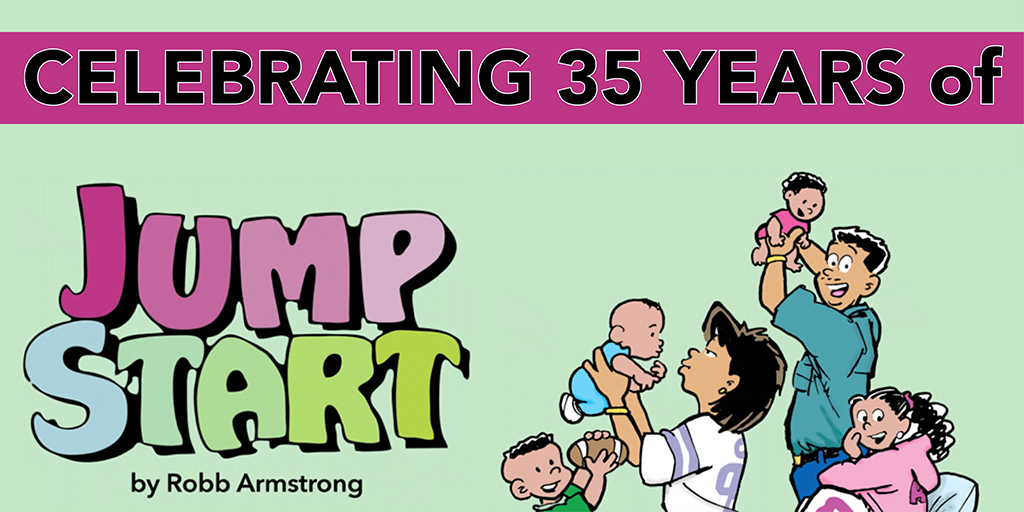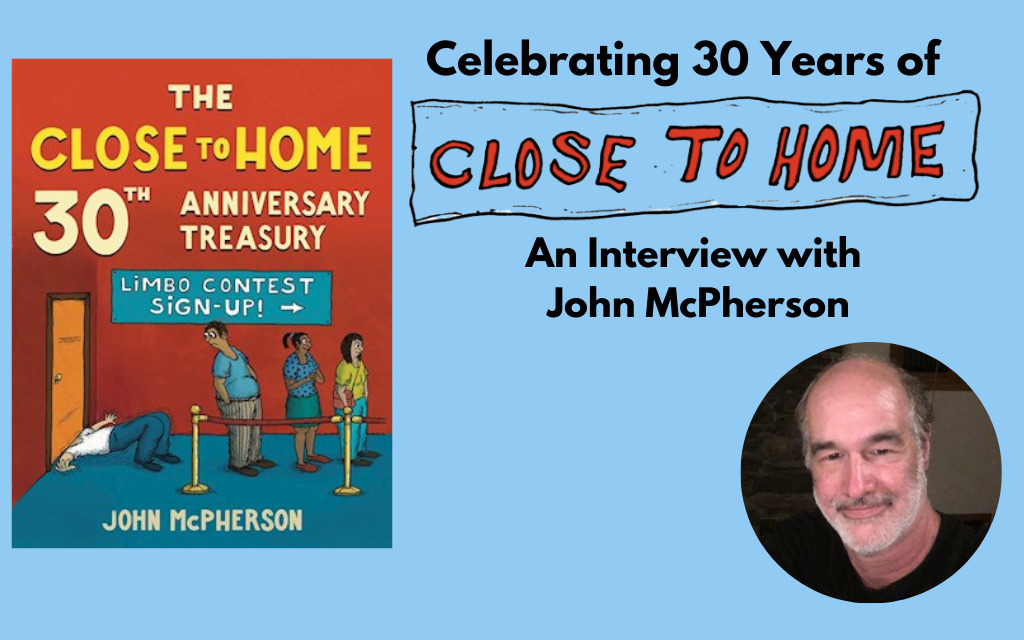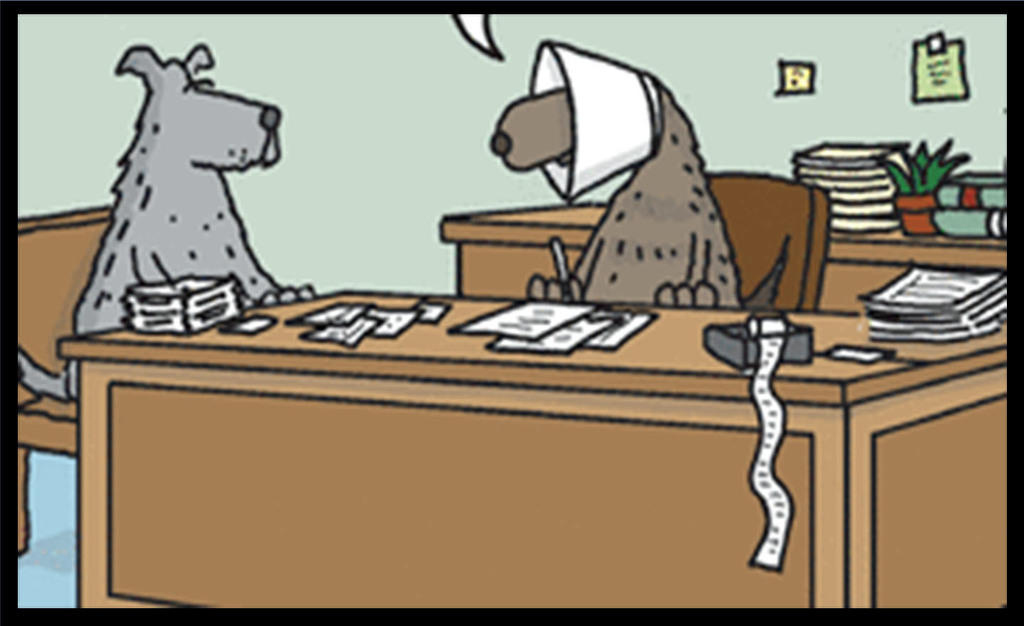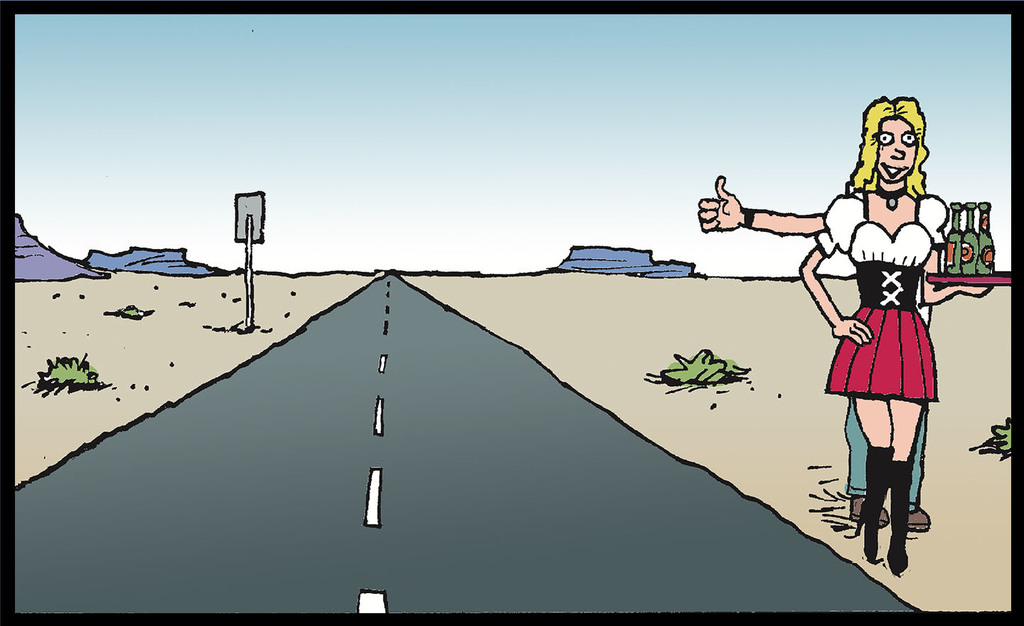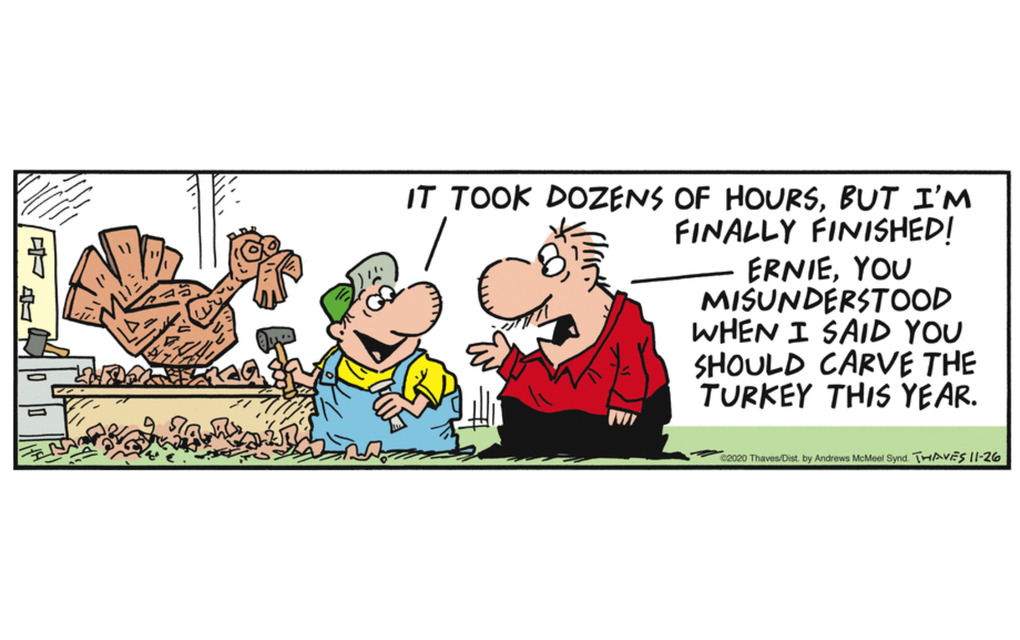Mark Buford (Scary Gary)
by GoComicsToday, we hear from Scary Gary creator Mark Buford!
How did you begin your career as a cartoonist/When did you start cartooning?
I began drawing and doodling at a very young age. Most of my family members are artistically inclined, so I found that I had sort of a natural talent (such as it is) for drawing. Like most cartoonists in my age group, it all started with Peanuts. I fell in love with the strip and its characters immediately, and then set about the task of drawing them as much as I could. It would be years, of course, before I found my own voice and style, but Peanuts was sort of the Genesis.
The beginning of actually drawing comics for me came without the inspiration of daily strips, but rather a combination of underground comics and stand-up comedy. In 1988 I was living in Seattle. There, I started to read underground/alternative comics. Some of my favorite artists and titles were:
- Robert Crumb (Zapped, Self-Loathing, Weirdo)
- Daniel Clowes (Eightball, Ghost World)
- Adrian Tomine (Optic Nerve)
- Seth (Palookaville, It's a Good Life, if You Don't Weaken)
- Chester Brown (The Playboy, Louis Riel)
- Joe Matt (The Poor Bastard, Fair Weather)
- Harvey Pekar (American Splendor)
I became completely engrossed with these types of comics. The way in which the artists were able to tell stories with gentle, dramatic arcs and conversational dialog was a real eye-opener for me. Those are the types of comics I was drawing (or attempting to draw) when I began putting pen to Bristol board.
At about the same time, I started to develop an interest in stand-up-comedy. I was an "open-miker" around Atlanta in the late 1980s and early 1990s, battling stage fright and struggling through my eternal five minutes on stage every Wednesday night. It should be noted that at that time, comedians like Jerry Seinfeld, Jay Leno and Garry Shandling were still nightclub comics on the regular tour circuit. They would all perform at the clubs in Atlanta periodically and were all happy to mingle and mentor us lowly supplicants. Seinfeld was always particularly approachable and gracious.
At any rate, as my chronic stage fright failed to abate, I started thinking of a way in which I could integrate my love of writing jokes with my love of comics. This merger of interests launched my career in daily comic strips.
What inspires you?
Good comedy writing. I recently read a book called "And Here's the Kicker" by Mike Sacks. A terrific read for anyone interested in comedy writing. It compiles conversations with 21 top humor writers on their craft. I get really excited when I'm exposed to comedy writing (movies, TV or comics) that doesn't resort to puns, play-on-word jokes or expositional dialog. I desperately try to stay away from all the aforementioned traps in my comic strip. I don't always succeed, but it's always on my mind. Whenever I write a joke, I always think to myself, "Would I be embarrassed to show this to a great comedy writer like Bob Odenkirk, or George Meyer, or Paul Feig?" If the answer is yes, I start over.
Achievements/Accomplishments
Last year, the actor Jack Black and his production company (Electric Dynamite), along with Warner Bros. Entertainment, expressed an interest in turning Scary Gary into an animated television series. We put together a five-year option deal that will allow them to pitch a pilot episode to all the major networks. There has been no movement with anything since (option deals have a tendency to languish), but it was very exciting to have some objective recognition for my work.
I have also had a book compilation published. "A Good Severed Head is Hard to Find" was published by Moonbase Press and compiles the entire first year of the strip.
Your favorite childhood comics/Comics you read today
Growing up, my favorite comics included Peanuts, The Wizard of Id, B.C., Tumbleweeds, Andy Capp, Calvin and Hobbes and The Far Side.
My favorite daily strips today are Cul-de-Sac and Pooch Cafн©. I also enjoy non-mainstream strips like The City, Red Meat and The Perry Bible Fellowship.
Your studio/Workspace
I live and work in a loft space in downtown Atlanta that began life in 1920 as a cotton warehouse. It's a wonderful place to work. Many of my neighbors are creative types (artists, photographers, filmmakers, etc.), so a little camaraderie and inspiration are never too far away.


